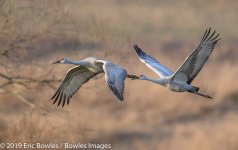Oppos 10x optical zoom tech for phones is another nail in the coffin for real cameras
Traditional camera mid market space -
Squashed at both ends -
by Sony's eye tracking AF advancements from above, and,
by Smartphone advances (quad pixel, computational photography, HDR stacking, AI, artificial bokeh, ever increasing camera count, including OIS, and now '10x' optical zoom, etc - all now (or soon) tied up in foldable screens to convert to multi app running tablets, more computing power than what used to be on your desktop, and interconnected communications to boot! ) from below
https://mashable.com/article/oppo-10x-optical-zoom-phone-camera-mwc-2019/
Walking around with your phone in your pocket - already such a powerful computer, and very soon a highly capable and super convenient photography device - capable of handling scenes from 16mm to 160mm optically, supercedes a lot of the pocketable point and shoot devices, and places pressure on the smaller sensor cameras. Small sensors or not, there will be a lot of good photography done with these smartphone devices because they will be everywhere, everytime.
It seems that only truly unique offerings will find a place .....
Things like Nikon's P1000, some of the fast lens Panasonic bridges, Sony's ripper little RX-10IV, etc ..... oh what could have been with Nikon's 1 system if only they didn't knobble it so much to protect their traditional DSLR market space ....
The MFT offerings that have physically grown to full DSLR size, and yet with few fast, long lenses, seem in a very strange space.
APSC (Mirrorless) seems to have Fujifilm and Sony both carving out viable spaces. The bar is going to be set extremely high for Nikon to enter, and Canon to work out a way to have it as a viable business segment ....
FF is more and more crowded - fighting over a shrinking pie - under intense pressure. I know at the start of this thread there was a quote by Nikon saying that there was no need to panic in the next 5 years, but really Sony's AF advancements are moving the bar higher and higher as time goes on. What was a non-urgent situation only a short time ago, now seems all the more urgent now.
Had Canon and Nikon teamed up for a common CaNikon FF Mirrorless mount, it is likely that they could have addressed these threats in a complementary fashion, far better, quicker, and far more efficiently and profitably. I could even see the likelihood under this scenario that the overall drastic market number decline could have been somewhat halted, or possibly even reversed ...... :cat:
Chosun :gh:








